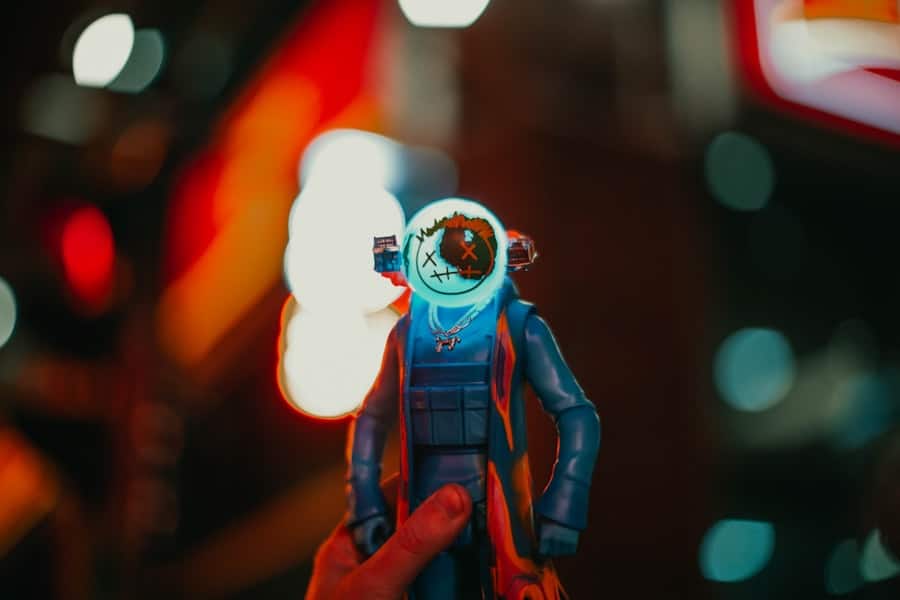The evolution of space suits has been a remarkable journey, reflecting the advancements in technology and our understanding of the harsh environments beyond Earth. As humanity prepares for ambitious missions to the Moon, Mars, and beyond, the design and functionality of space suits have become paramount. Next-generation space suits are not merely protective garments; they are sophisticated systems that integrate cutting-edge technology to enhance astronaut performance, safety, and comfort.
These suits are engineered to meet the challenges posed by extraterrestrial environments, ensuring that astronauts can conduct their missions effectively while minimizing risks to their health and well-being. The development of next-gen space suits is driven by the need for increased mobility, improved life support systems, and enhanced protection against environmental hazards. As missions extend further into space, the requirements for these suits evolve.
For instance, NASA’s Artemis program aims to return humans to the Moon and eventually send astronauts to Mars, necessitating suits that can withstand extreme temperatures, radiation exposure, and micrometeoroid impacts. The design process involves extensive research and testing, incorporating feedback from astronauts who have previously worn older models. This iterative approach ensures that the new suits are not only technologically advanced but also user-friendly and practical for the unique demands of space exploration.
Key Takeaways
- Next-gen space suits offer enhanced mobility and flexibility for astronauts
- Advanced life support systems provide improved safety and sustainability in space
- Radiation protection is a key feature of next-gen space suits to safeguard astronauts
- Improved communication and navigation systems enable better connectivity in space
- Enhanced comfort and temperature regulation ensure astronauts can work effectively in harsh environments
Enhancements in Mobility and Flexibility
One of the most significant advancements in next-gen space suits is the enhancement of mobility and flexibility. Traditional space suits often restricted movement due to their bulkiness and rigid materials, making tasks such as walking, bending, or operating tools cumbersome. In contrast, modern designs prioritize agility, allowing astronauts to perform complex maneuvers with greater ease.
This is achieved through innovative materials and engineering techniques that provide both strength and flexibility. For example, the use of lightweight composite materials and articulated joints enables a wider range of motion while maintaining structural integrity. Moreover, advancements in suit design have led to the incorporation of exoskeletal elements that assist with movement.
These exoskeletons can provide additional support during physically demanding tasks, reducing fatigue and enhancing overall performance.
The focus on mobility is not just about comfort; it directly impacts mission success.
Astronauts need to navigate diverse terrains, operate equipment, and respond to unexpected challenges, all of which require a suit that facilitates rather than hinders movement.
Advanced Life Support Systems

The life support systems within next-gen space suits represent a critical area of innovation. These systems are responsible for providing astronauts with essential resources such as oxygen, temperature control, and waste management. Traditional life support systems were often bulky and limited in their capabilities, but modern designs aim to create more efficient and compact solutions.
For instance, advancements in oxygen generation technology allow for a more sustainable supply of breathable air, reducing the need for heavy oxygen tanks. Additionally, next-gen suits incorporate advanced carbon dioxide scrubbers that efficiently remove exhaled CO2 from the suit’s atmosphere. This is crucial for maintaining a safe environment during extended missions where resupply may not be feasible.
Furthermore, the integration of smart sensors within the life support systems enables real-time monitoring of vital signs and environmental conditions. This data can be transmitted back to mission control or analyzed by onboard AI systems to ensure that astronauts remain within safe operational parameters.
Radiation Protection
As space exploration ventures further from Earth, the threat of cosmic radiation becomes increasingly significant. Next-gen space suits are designed with enhanced radiation protection features to safeguard astronauts from harmful exposure during their missions. Traditional suits offered limited shielding against radiation; however, modern designs utilize advanced materials that provide better attenuation of high-energy particles.
For example, researchers are exploring the use of polyethylene and other hydrogen-rich materials that effectively absorb radiation while remaining lightweight. In addition to material advancements, next-gen suits may incorporate layered shielding systems that adapt based on the astronaut’s location and mission duration. For instance, during periods of increased solar activity or when traversing areas with higher radiation levels, additional protective layers can be deployed.
This dynamic approach not only enhances safety but also allows for greater flexibility in mission planning. By addressing radiation exposure comprehensively, these suits ensure that astronauts can conduct their work without compromising their health.
Improved Communication and Navigation
Effective communication and navigation are vital components of any space mission, and next-gen space suits are equipped with advanced technologies to facilitate these functions. Traditional communication systems often relied on bulky headsets or external devices that could be cumbersome in a space environment. In contrast, modern suits integrate lightweight communication systems directly into the helmet design, allowing for seamless interaction between astronauts and mission control or among team members.
These integrated communication systems utilize advanced audio technology that filters out background noise while enhancing voice clarity. This is particularly important during extravehicular activities (EVAs), where ambient sounds can interfere with communication. Furthermore, next-gen suits may include augmented reality (AR) displays within the helmet visor that provide real-time navigation data and mission information.
Enhanced Comfort and Temperature Regulation

Comfort is a crucial factor in the design of next-gen space suits, especially considering the extended durations astronauts may spend in them during missions. Traditional suits often suffered from issues related to temperature regulation, leading to discomfort or even heat stress during EVAs. Modern designs address these challenges through advanced thermal control systems that actively manage temperature fluctuations within the suit.
These thermal control systems utilize phase change materials (PCMs) that absorb excess heat when temperatures rise and release it when they drop. This dynamic regulation helps maintain a stable internal environment regardless of external conditions. Additionally, next-gen suits may incorporate microclimate cooling technologies that circulate air around the astronaut’s body, providing relief during physically demanding tasks or in direct sunlight on planetary surfaces.
Moreover, ergonomic design principles play a significant role in enhancing comfort. The fit of the suit is tailored to accommodate a range of body types while allowing for easy donning and doffing. Soft inner linings reduce chafing and discomfort during prolonged wear, ensuring that astronauts can focus on their tasks without being distracted by physical discomfort.
Durability and Longevity in Harsh Environments
Space is an unforgiving environment characterized by extreme temperatures, micrometeoroid impacts, and abrasive dust particles. As such, durability is a key consideration in the design of next-gen space suits. The materials used must withstand these harsh conditions while maintaining functionality over extended periods.
Innovations in fabric technology have led to the development of highly resilient materials that resist wear and tear while providing adequate protection. For instance, next-gen suits may utilize multi-layered fabrics that combine different properties—such as abrasion resistance, thermal insulation, and flexibility—into a single garment. This layered approach not only enhances durability but also allows for easier repairs in the field if damage occurs during a mission.
Additionally, rigorous testing protocols simulate various environmental conditions to ensure that these suits can endure the rigors of space travel without compromising safety or performance. The longevity of space suits is also enhanced through modular design principles that allow for easy replacement of components as needed. For example, if a particular section of the suit becomes damaged or worn out, it can be replaced without requiring an entirely new suit.
This modularity not only extends the lifespan of individual suits but also reduces costs associated with manufacturing new ones.
Integration of Smart Technologies and AI Assistance
The integration of smart technologies and artificial intelligence (AI) into next-gen space suits represents a transformative leap forward in astronaut capabilities. These technologies enhance situational awareness by providing real-time data analysis and decision-making support during missions. For instance, AI algorithms can analyze environmental conditions and suggest optimal routes for exploration based on current weather patterns or potential hazards.
Smart sensors embedded within the suit continuously monitor vital signs such as heart rate, body temperature, and hydration levels. This data is processed by onboard AI systems that can alert astronauts to potential health issues before they become critical. Such proactive monitoring is essential for maintaining astronaut health during long-duration missions where medical assistance may be limited.
Furthermore, AI assistance extends to operational tasks as well. Astronauts can receive step-by-step guidance for complex procedures through augmented reality displays within their helmets. This capability reduces reliance on memory alone and allows for more efficient task execution under pressure.
By combining human expertise with AI-driven insights, next-gen space suits empower astronauts to perform at their best while navigating the challenges of space exploration. In summary, next-generation space suits represent a significant advancement in our ability to explore outer space safely and effectively. With enhancements in mobility, life support systems, radiation protection, communication technologies, comfort features, durability, and smart technologies, these suits are poised to support humanity’s ambitious goals in space exploration for years to come.
In the quest to enhance human survival in space, the development of next-generation space suits plays a crucial role. These advanced suits are designed to withstand the harsh conditions of space, providing astronauts with the necessary protection and mobility. A related article that delves into the technological advancements supporting human endeavors in extreme environments is the Samsung Smartwatches Review. This article explores how wearable technology, like smartwatches, is evolving to offer features that could be beneficial in space exploration, such as health monitoring and communication capabilities, which are essential for astronaut safety and mission success.
FAQs
What are next-gen space suits?
Next-gen space suits are advanced spacesuits designed to support human survival in the harsh environment of space. They incorporate the latest technologies and materials to provide astronauts with protection, mobility, and life support systems.
How do next-gen space suits support human survival?
Next-gen space suits support human survival by providing protection from extreme temperatures, micrometeoroids, and radiation, as well as supplying oxygen, regulating temperature, and allowing for mobility and dexterity during spacewalks and extravehicular activities.
What are some key features of next-gen space suits?
Key features of next-gen space suits include advanced materials for durability and flexibility, integrated life support systems, improved mobility and dexterity, enhanced communication and data transmission capabilities, and built-in safety mechanisms for emergency situations.
How do next-gen space suits differ from previous space suits?
Next-gen space suits differ from previous space suits in their use of advanced materials and technologies, improved mobility and comfort for astronauts, enhanced life support systems, and better integration with other space equipment and vehicles.
What are the potential benefits of next-gen space suits for future space exploration?
The potential benefits of next-gen space suits for future space exploration include increased safety and protection for astronauts, improved efficiency and productivity during extravehicular activities, and support for longer-duration missions to the Moon, Mars, and beyond.

